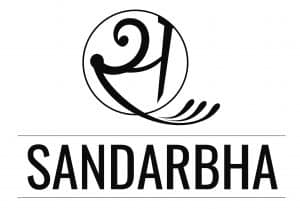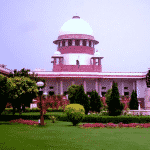Varnas
- The priests divided people into four groups called Varnas.
- According to them, each varna had a different set of functions.
- These groups were decided on the basis of birth.
- Brahmin: They were expected to study and teach the Vedas, perform sacrifices and receive gifts.
- Kshatriyas: They were the rulers and were expected to fight battles and protect people.
- Vish or the Vaishyas: They were expected to be farmers, herders and traders. Both the Kshatriyas and the Vaishyas could perform sacrifices.
- Shudras: They had to serve the other three groups and could not perform any rituals. Often, women were also grouped with them. They were not allowed to study the Vedas.
Read More: Class 6 Ch 5 History- What Books & Burials Tell Us
- Later, some people were classified as untouchables.
- These included some craftspersons, hunters, gatherers and those who helped perform cremations and burials.
- According to the priests, contact with these groups was polluting.
Janapadas
- Rajas who performed sacrifices were recognised as rajas of Jana padas rather than janas.
- The word janapada literally means the land where the jana set its foot, and settled down.
- A number of settlements have been excavated in these Jana padas. Example: Purana Qila in Delhi, Hastinapur near Meerut,
- People lived in huts, kept cattle and other animals.
- They also grew a variety of crops.
- They made earthen pots. Some were grey and others were red.
- A special type of pottery found at these sites is known as Painted Grey Ware.
Mahajanapadas
- About 2500 years ago, some Jana padas became more important than others and were known as Mahajanapadas.
- Most had a fortified capital city. This means that huge walls were built around them. Why were these walls built?
- These were probably built because people were afraid of attacks from other kings and wanted protection.
- It is likely that some rulers wanted to show how rich and powerful they were by building large, tall and impressive walls around their cities.
- The land and the people living inside the fortified area could be more easily controlled by the king.
- The new rajas began maintaining armies.
- Soldiers were paid regular salaries and maintained by the king throughout the year.
- Payments were probably made using punch marked coins.
Taxes
- Rulers of the mahajanapadas needed resources for building huge forts and maintaining armies. So, they started collecting regular taxes.
- Most people were farmers, so taxes on crops was the most important. The tax, known as Bhaga or a share, was fixed at 1/6th of what was produced.
- Taxes in the form of labour was levied on craftspersons as well.
- Taxes in the form of animals and animal produce had to be paid by herders.
- There were taxes on goods that were brought and sold through trade.
- Hunters and gatherers had to provide forest produce to the raja.
Changes in Agriculture
- There was a growing use of iron ploughshares and more grain could now be produced.
- People began transplanting paddy. This meant that instead of scattering seeds on the ground, from which plants would sprout, saplings were grown and then planted in the fields. This led to increased production, as many more plants survived.
- Generally slaves (dasas and dasis) and landless agricultural labourers (kammakaras) had to do this work.
Magadha
- It became the most important mahajanapada in about 200 years.
- Important rivers like Ganga and Son flowed through it. They helped in transportation, water supplies and making the land fertile.
- Bimbisara and Ajatasattu were two very powerful rulers.
- Mahapadma Nanda was another important ruler.
- Rajagriha in Bihar was the capital of Magadha for several years. Later the capital was shifted to Pataliputra.
Vajji
- While Magadha became a powerful kingdom, Vajji with its capital at Vaishali (Bihar), was under a different form of government, known as Gana (a group that has many members) or Sangha (organisation or association).
- In this case, there were not one, but many rulers. Each one was known as a raja.
- They performed rituals together.
- They also met in assemblies, and decided what had to be done and how, through discussion and debate.
- However, women, dasas and kammakaras could not participate in these assemblies.
- Both the Buddha and Mahavira belonged to ganas or sanghas. (Digha Nikaya is a famous Buddhist book containing some speeches of the Buddha, written about 2300 years ago).
- Rajas of powerful kingdoms tried to conquer the sanghas. Nevertheless, these lasted for a very long time, till about 1500 years ago, when the last of the ganas or sanghas were conquered by the Gupta rulers.











